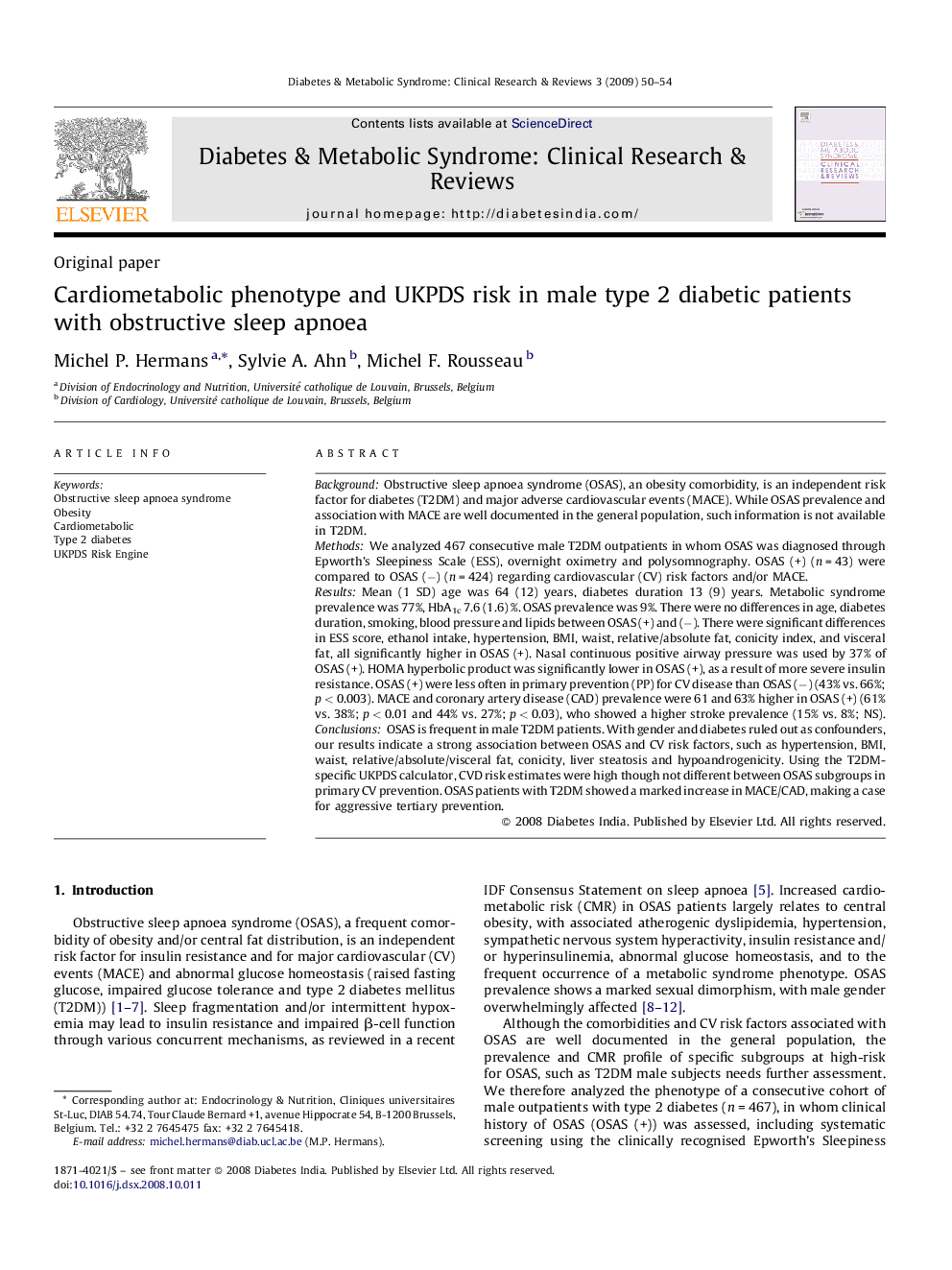| کد مقاله | کد نشریه | سال انتشار | مقاله انگلیسی | نسخه تمام متن |
|---|---|---|---|---|
| 2910167 | 1174608 | 2009 | 5 صفحه PDF | دانلود رایگان |

BackgroundObstructive sleep apnoea syndrome (OSAS), an obesity comorbidity, is an independent risk factor for diabetes (T2DM) and major adverse cardiovascular events (MACE). While OSAS prevalence and association with MACE are well documented in the general population, such information is not available in T2DM.MethodsWe analyzed 467 consecutive male T2DM outpatients in whom OSAS was diagnosed through Epworth's Sleepiness Scale (ESS), overnight oximetry and polysomnography. OSAS (+) (n = 43) were compared to OSAS (−) (n = 424) regarding cardiovascular (CV) risk factors and/or MACE.ResultsMean (1 SD) age was 64 (12) years, diabetes duration 13 (9) years. Metabolic syndrome prevalence was 77%, HbA1c 7.6 (1.6) %. OSAS prevalence was 9%. There were no differences in age, diabetes duration, smoking, blood pressure and lipids between OSAS (+) and (−). There were significant differences in ESS score, ethanol intake, hypertension, BMI, waist, relative/absolute fat, conicity index, and visceral fat, all significantly higher in OSAS (+). Nasal continuous positive airway pressure was used by 37% of OSAS (+). HOMA hyperbolic product was significantly lower in OSAS (+), as a result of more severe insulin resistance. OSAS (+) were less often in primary prevention (PP) for CV disease than OSAS (−) (43% vs. 66%; p < 0.003). MACE and coronary artery disease (CAD) prevalence were 61 and 63% higher in OSAS (+) (61% vs. 38%; p < 0.01 and 44% vs. 27%; p < 0.03), who showed a higher stroke prevalence (15% vs. 8%; NS).ConclusionsOSAS is frequent in male T2DM patients. With gender and diabetes ruled out as confounders, our results indicate a strong association between OSAS and CV risk factors, such as hypertension, BMI, waist, relative/absolute/visceral fat, conicity, liver steatosis and hypoandrogenicity. Using the T2DM-specific UKPDS calculator, CVD risk estimates were high though not different between OSAS subgroups in primary CV prevention. OSAS patients with T2DM showed a marked increase in MACE/CAD, making a case for aggressive tertiary prevention.
Journal: Diabetes & Metabolic Syndrome: Clinical Research & Reviews - Volume 3, Issue 1, January–March 2009, Pages 50–54